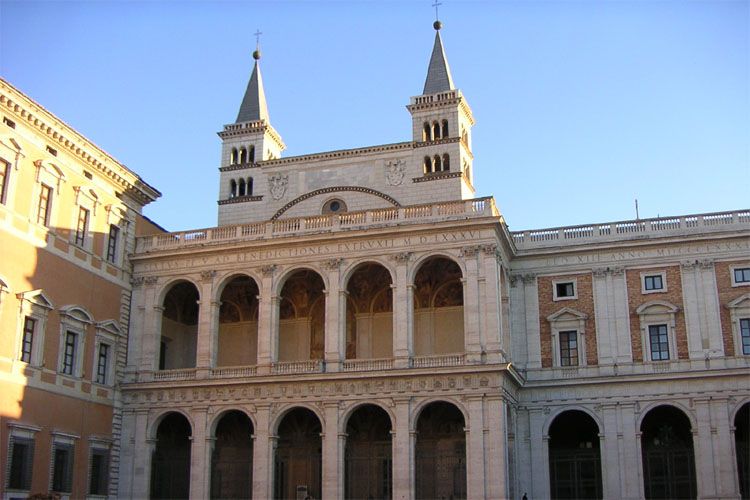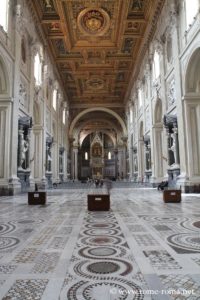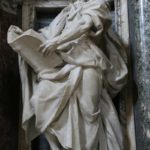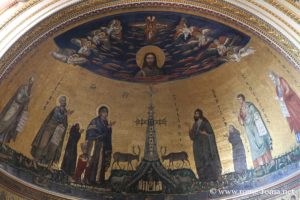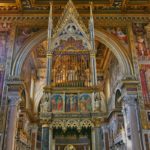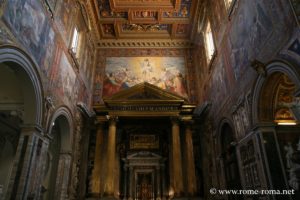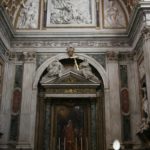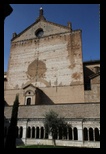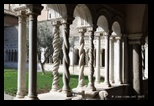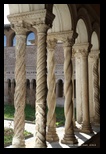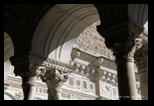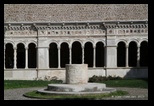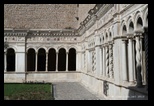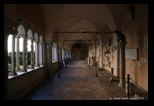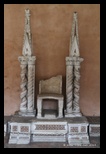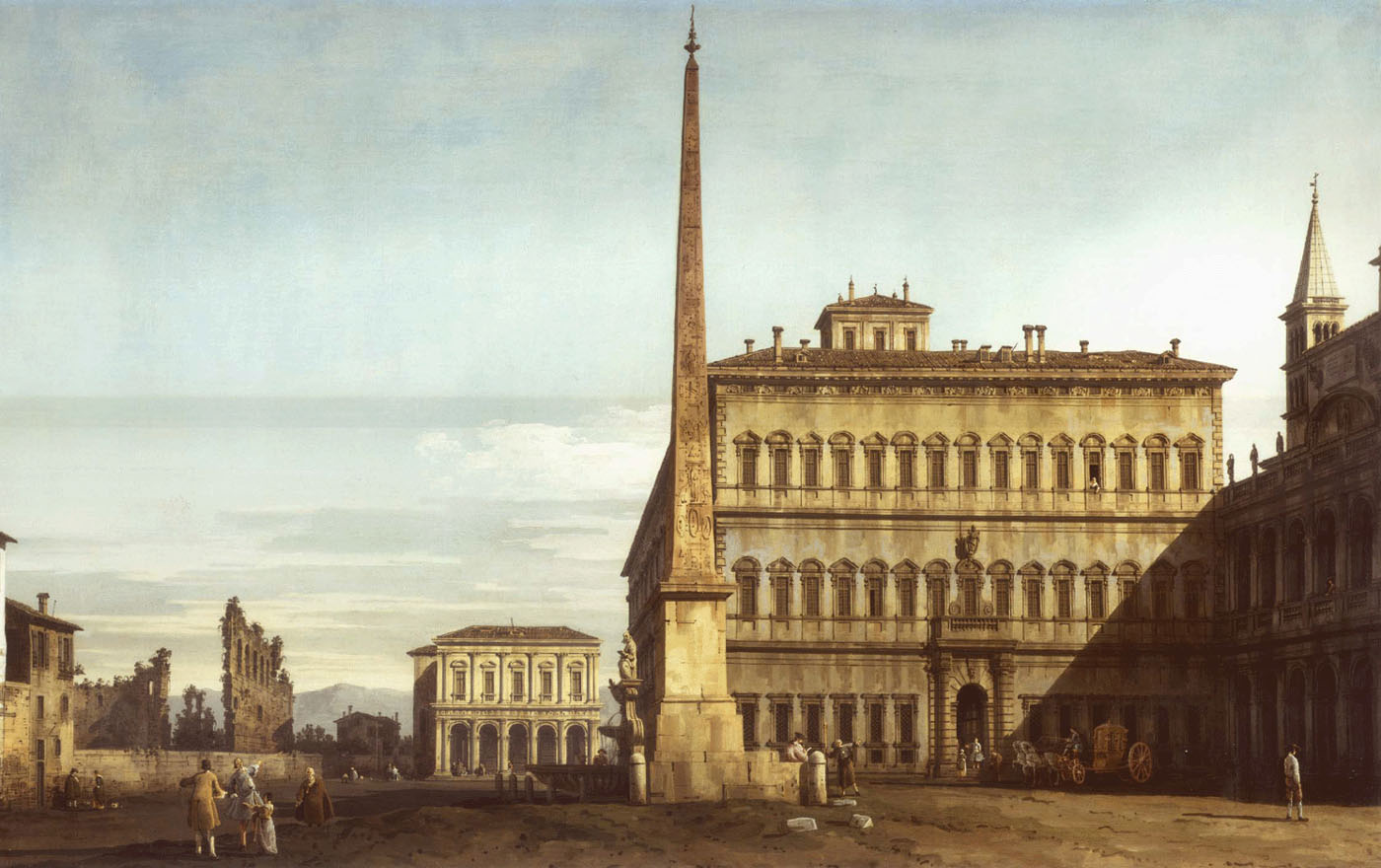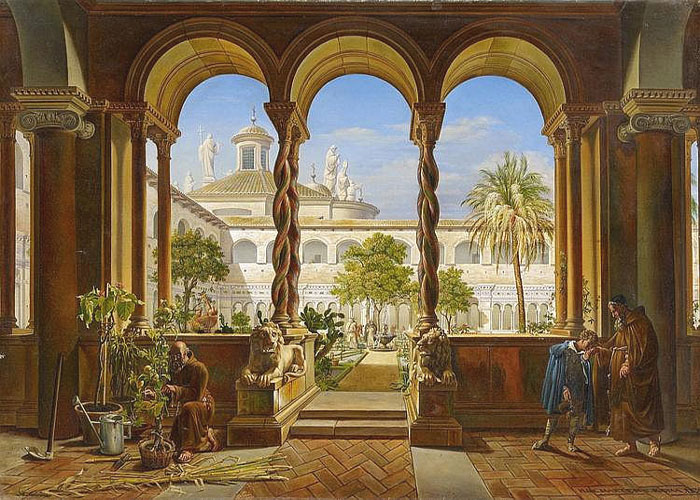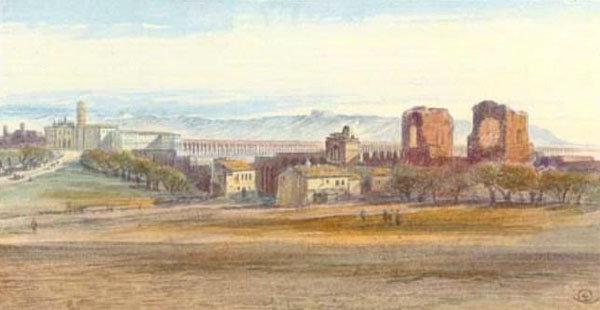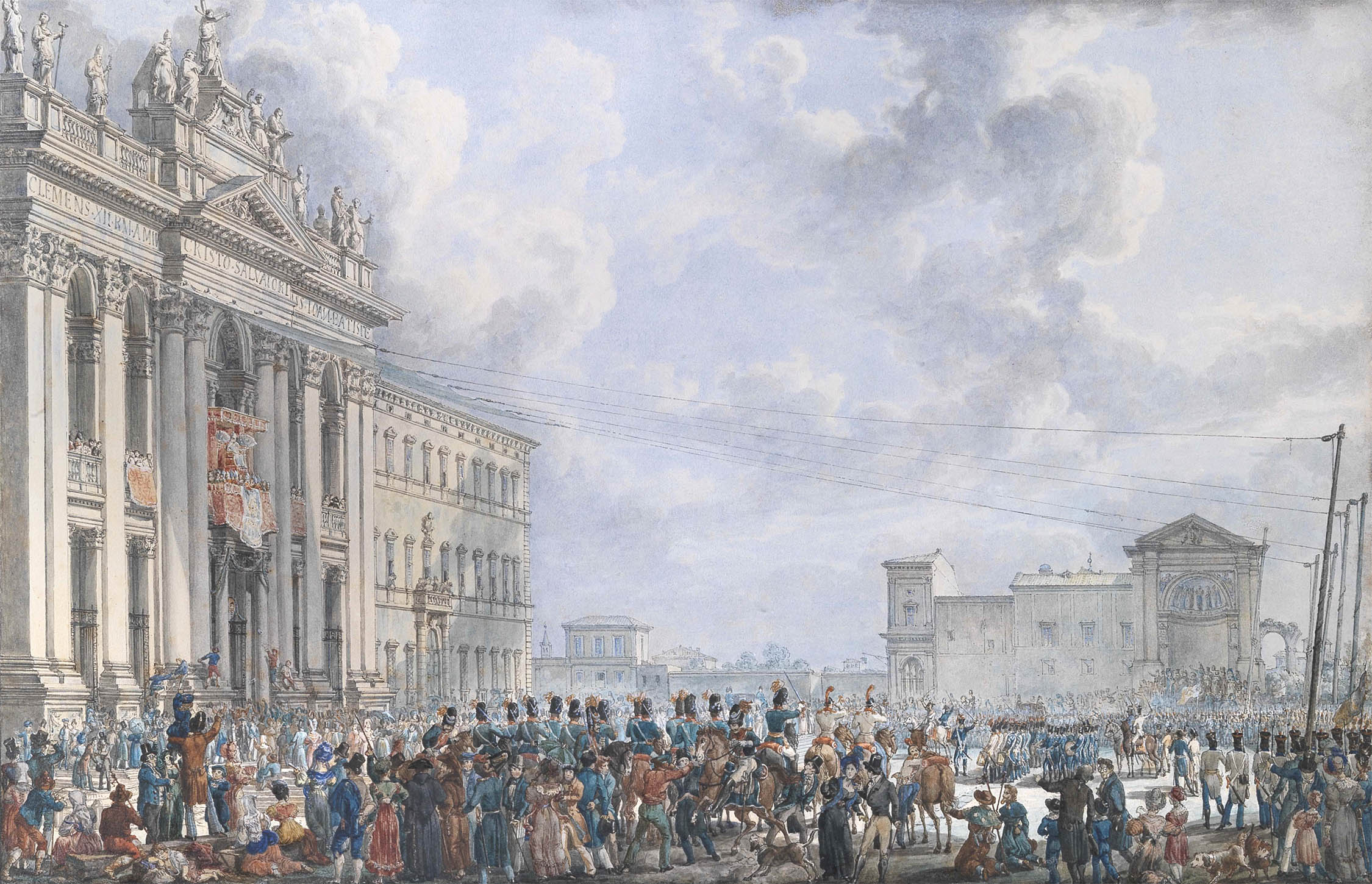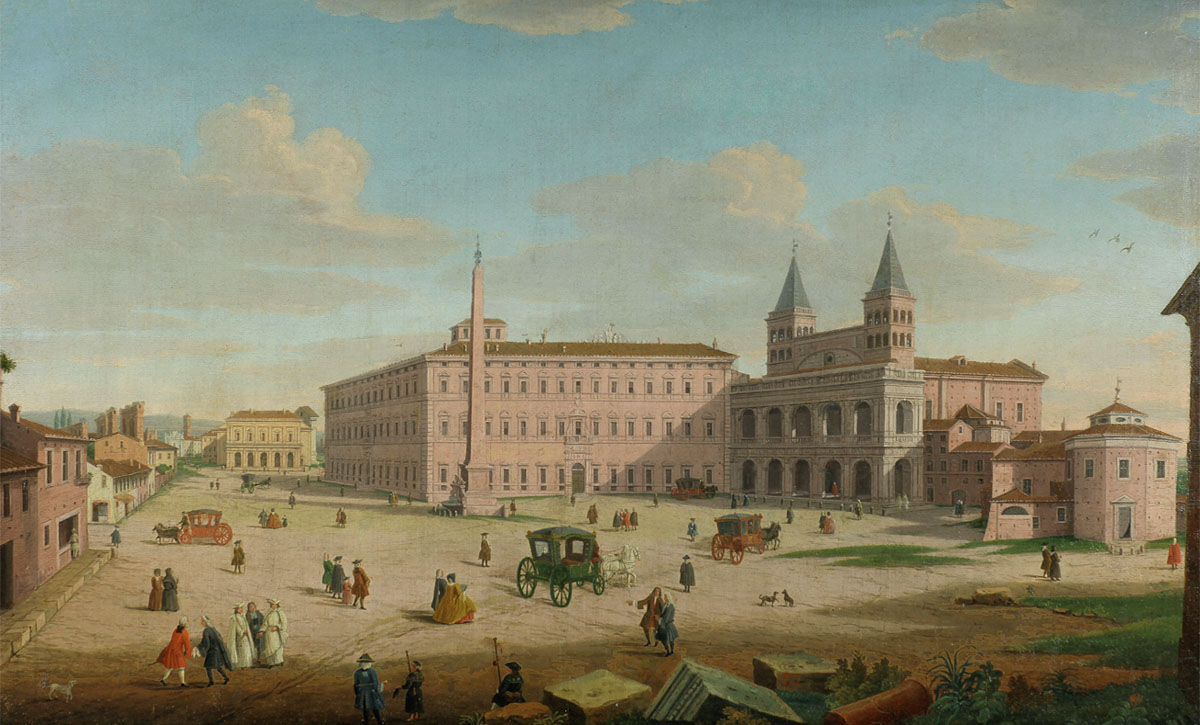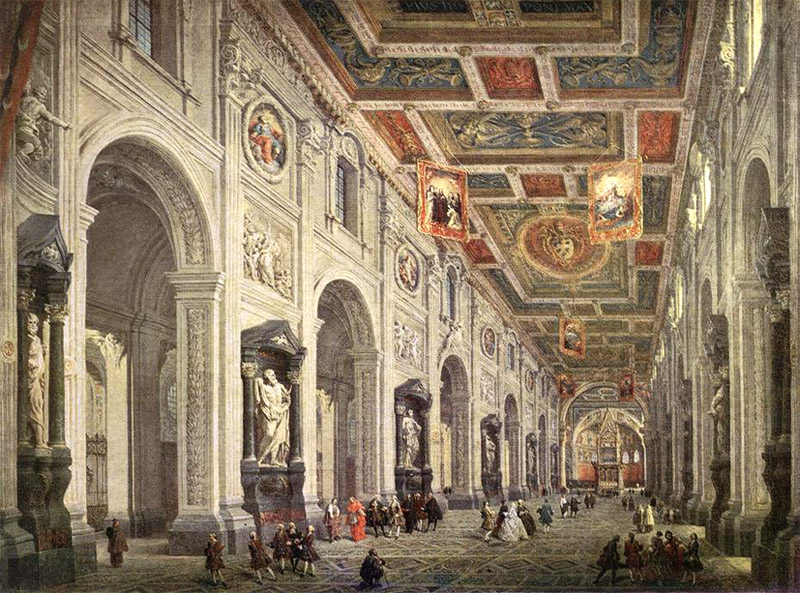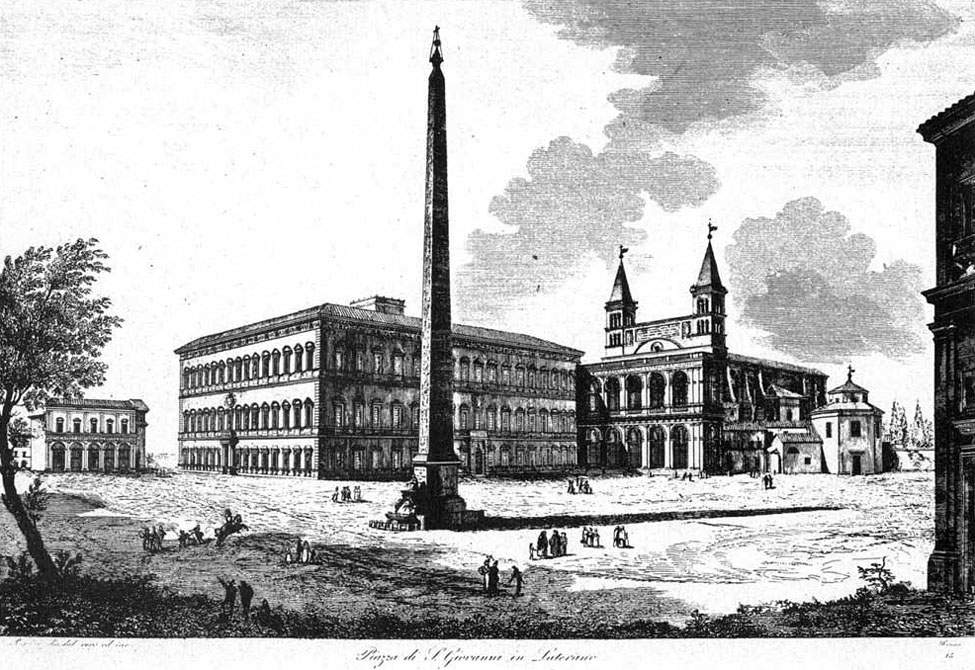The Basilica of St. John Lateran (Basilica di San Giovanni in Laterano in Italian) is a very distinctive church. It is in fact the Pope’s cathedral as bishop of Rome, and the first church of the city, founded in 314 AD by Emperor Constantine, 10 years before St. Peter’s. It is therefore designated as the “mother of all churches” and still serves as a model for Christian constructions.
The building remains majestic, with proportions corresponding to the ancient basilica even though it was on several occasions ravaged by fire.
Visitors walk through the great nave, passing the colossal statues of the apostles, to reach the splendid ciborium. In addition, the old 13th-century cloister is well preserved, and outside the Lateran octagonal baptistery has retained Paleo-Christian elements such as mosaics.
The full title of the church is Basilica of the Most Holy Savior and of Saints John the Baptist and John the Evangelist.
St. John Lateran Complex: not to be missed
- The Basilica of St. John Lateran, with its monumental façade and richly decorated interior (see also: visit to the Lateran Basilica).
- The canopy of the high altar and the Gothic ciborium, where sacred relics are preserved.
- The medieval cloister of the 13th century, adorned with finely decorated columns.
- The Lateran Baptistery, one of the oldest in Christendom, built in the 4th century.
- The Sancta Sanctorum and the Scala Santa (Holy Stairs), a major pilgrimage site tied to Christian tradition.
- The Lateran obelisk, the tallest in Rome, originally from Karnak in Egypt.
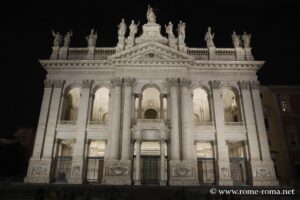
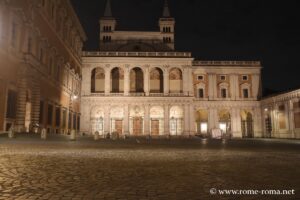
Historical Overview
In the 4th century, at the end of the persecutions, the mother of Emperor Constantine gave part of her family’s property (the Lateran) to Melchiades, the bishop of Rome and successor of Saint Peter, so that he could establish himself there. Since then, the church he built on an ancient place of worship has remained the cathedral of Rome, despite all the alterations it has undergone. For nearly a thousand years, it remained the most important Christian church, the center of the Papacy, together with the nearby papal residence.
After his exile in Avignon, the pope preferred to settle near Saint Peter’s Basilica because of the fortifications surrounding it, which offered him more secure protection. Nevertheless, the Basilica of Saint John remained the “mother and head of all churches.”
The church was rebuilt and embellished over the course of history. A major enlargement was ordered by Nicholas IV at the end of the 13th century, commissioning the apse mosaic from Jacopo Torriti. But a major fire destroyed it in 1308. It was rebuilt and decorated again by Giotto. Unfortunately, it burned again in 1360.
Gregory XI, upon his return from Avignon, rebuilt it towards the end of the 14th century. It subsequently underwent significant modifications.
In 1432, the interior was painted under Martin V by Pisanello and Gentile da Fabriano. The loggia delle Benedizioni, built for the Jubilee of 1300, was rebuilt at the end of the 16th century by Sixtus V. The transept was decorated around 1600 by Clement VIII.
Innocent X entrusted major works to Francesco Borromini in the mid-17th century, to remodel the entire interior.
The current façade was built between 1732 and 1735 under Clement XII Corsini. The chancel, the apse, and its mosaics were entirely rebuilt at the end of the 19th century, with the mosaic being a faithful copy of Torriti’s original.
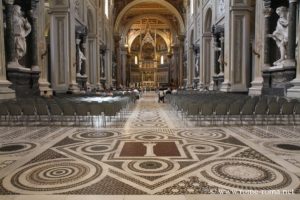
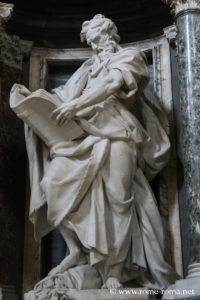
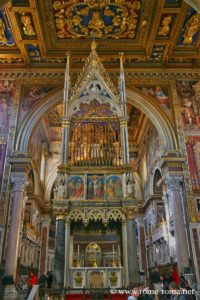
Visit of the Basilica and Cloister Visit
The interior of the basilica, 130 meters long, preserves the proportions of the original 4th-century building.
Its layout, however, is very different from that of the original church, as a result of major works carried out by Borromini between 1646 and 1649.
Exterior
The 18th-century main façade by Galilei has a single order, with Corinthian pillars and half-columns, a central pediment, and a balustrade topped with fifteen colossal statues representing Christ, Saints John the Baptist and the Evangelist, and the Doctors of the Church. On the cornice, a long inscription recalls the construction of the façade commissioned by Clement XII.
A mosaic in the pediment depicting Jesus comes from the Early Christian basilica.
Under the portico, marble reliefs evoke the life of the Baptist. The 4th-century statue of Constantine comes from the Quirinal baths. The central doorway is formed by the ancient bronze door of the Curia from the Roman Forum. The last door on the right is the Holy Door.
The north transept façade is framed between two twin bell towers of medieval origin. The porch with the Loggia of Blessings in front of it was built by Domenico Fontana. On its ceiling, the frescoes of angels and saints date back to Sixtus V, painted by Cesare Nebbia and Giovanni Guerra. In a niche closed by a gate stands a bronze statue of Henry IV of France.
The basilica has five naves. The splendid interior results from the redesign conceived by Borromini in the 17th century.
The central nave has preserved its coffered ceiling from the 16th century.
The 12 niches inserted into the pillars house monumental statues of the apostles, built in the early 18th century by several sculptors, including Rusconi, Legros, and Monnot. They are framed by marble columns, with a pediment decorated with the Pamphilj dove.
Between the windows, painted medallions represent the prophets. The cosmatesque floor has remained from the medieval basilica.
At the end of the nave, at the crossing, the magnificent Gothic ciborium made by the Tuscan Giovanni di Stefano in 1367 shelters the papal altar.
A reliquary closed by a golden grille is said to contain the skulls of Saint Paul and Saint Peter. In front of it, the altar was rebuilt by Pius IX, with the tomb of Pope Martin V (1443, by Simone Ghini). On the outer cornice between the relic chamber and the altar, frescoes depict Saints, the Crucifixion, the Good Shepherd, the Madonna with Child, and the Coronation of Mary.
Apse and choir
Pope Leo XIII had the ancient apse rebuilt in 1885 by Virginio and Francesco Vespignani, destroying the one dating from Niccolò IV with its ambulatory from the late 13th century.
The new space houses the choir, richly decorated with frescoes, stuccoes, and polychrome marbles.
In the apse, the large mosaic represents, to the left of Christ’s cross and the dove of the Holy Spirit: the Virgin, Nicholas IV, Saint Peter, and Saint Paul; to the right, Saint John the Baptist, Saint John the Evangelist, and Saint Andrew.
Smaller figures of Saint Francis of Assisi and Saint Anthony of Padua were added under Nicholas IV. In the frieze at the feet of the apostles, the small figures of the artists Camerino and Torriti also appear.
This mosaic is a fairly faithful reproduction of the late 13th-century original (by Jacopo Torriti and Jacopo da Camerino). That itself was a reproduction of an earlier version.
The papal chair in the apse is a 19th-century copy of the original cosmatesque one that is kept in the cloister.
Transept
The transept, with its abundance of artworks, is particularly representative of late 16th-century Roman Mannerism.
In the north transept, the immense organ by Luca Biagi dates back to the 16th century. In the south transept, the altar of the Blessed Sacrament has a Baroque ciborium adorned with precious stones. The reliquary of the table of the Last Supper where Jesus ate is a work by Ambrogio Buonvicino and Orazio Censor. It is framed by four ancient Corinthian bronze columns from the 2nd century AD.
The fresco above, representing the Ascension, is the work of the Cavalier d’Arpino.
Side aisles
Borromini decorated the side aisles with much creativity, placing the ancient funerary monuments between the chapels, or working the inner faces of the pillars.
In the right aisle, a fragment of a 14th-century fresco, attributed by some to Giotto, comes from the decoration of the old Loggia delle Benedizioni. It depicts Pope Boniface VIII during the Holy Year 1300.
The main chapels in this aisle are: the Massimo Chapel, the Torlonia Chapel, and the Casati Chapel with the tombs of the Lombard cardinal Conte Casati (died in Rome in 1288), his descendant Don Agostino Casati (1739–1820), count of the Milan and Muggiò dynasties.
In the left nave, a copy of the recumbent statue of Riccardo degli Annibaldi was made by Arnolfo di Cambio in 1276 (the original is in the cloister).
In this aisle, the Corsini Chapel contains an ancient porphyry urn from the Pantheon, with the tombs of Pope Clement XII and other members of his family.
The stucco decorations are the work of the sculptor Simone Martinez of Messina and his son Francesco. The marble Pietà by Antonio Montauti, dated 1733, is the sculptor’s most renowned Baroque work.
Cloister
In the cloister, a masterpiece of Cosmatesque art from the early 13th century, numerous sculptures and ornaments are preserved, including works by Arnolfo di Cambio. It is accessed from inside the basilica. It is one of the largest in Rome, with sides measuring 36 meters in length.
This cloister is connected to the large Benedictine monastery enclosed within the Aurelian Walls. The monks were assigned to the services of the basilica.
With its beautiful inlaid marble columns, the work of the Vassalletto family, renowned Roman marble workers, its style stands between Romanesque and Gothic.
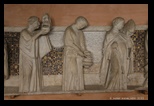 Funerary monument detail (1289) of Cardinal Ricardo Annibaldi, work by Arnolfo di Cambio
Funerary monument detail (1289) of Cardinal Ricardo Annibaldi, work by Arnolfo di Cambio
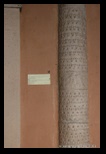 Column of the legendary Palace of Pilate
Column of the legendary Palace of Pilate
Articles on St. John Lateran
Map and address
Address : Piazza di S. Giovanni in Laterano, 4, 00184 Roma RM, ItalieIf you see this after your page is loaded completely, leafletJS files are missing.
Information
| Archbasilica of St. John Lateran Piazza di San Giovanni in Laterano |
Basilica opening hours (subject to change) Lateran Baptistery (subject to change) Holy Stairs (subject to change) Papal Chapel of the Sancta Sanctorum: 9:00 am – 1:30 pm and 3:00 pm – 5:10 pm. On Sundays and feast days open only from 3:00 pm to 5:10 pm |
Sources and links for further information
|


